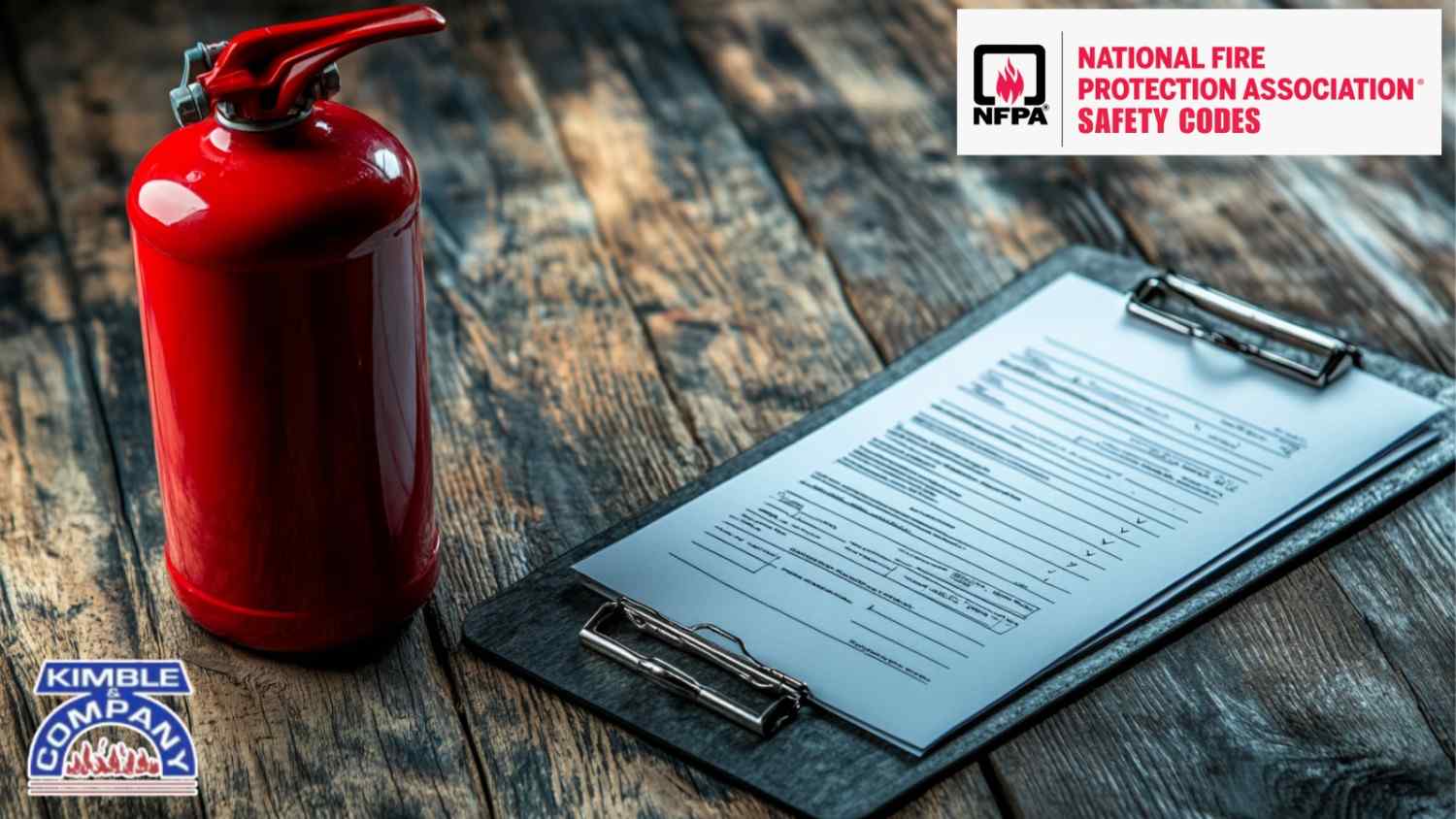Fire safety codes are critical for protecting lives, property, and investments in commercial properties. NFPA standards provide a structured and reliable framework to ensure fire safety systems operate effectively during emergencies. This guide will delve into NFPA standards, why they matter, and how they can be implemented to safeguard your commercial property.
What Are NFPA Standards?
The National Fire Protection Association (NFPA) establishes comprehensive codes and standards to guide fire protection systems’ design, installation, inspection, and maintenance. These standards are the foundation for safe building practices and effective fire safety solutions.
- Comprehensive Guidance: NFPA standards cover all aspects of fire safety, including sprinkler systems, alarm systems, and electrical safety protocols.
- Industry-Wide Application: They provide a universal set of guidelines used by fire protection contractors, building owners, and regulatory authorities.
- Water-Based Systems Emphasis: Many standards, such as NFPA 25, focus on the inspection, testing, and maintenance of water-based fire protection systems, ensuring their reliability in emergencies.
Key NFPA Codes and Standards for Commercial Properties
The National Fire Protection Association (NFPA) provides a comprehensive framework of codes and standards to elevate fire safety in commercial properties. These guidelines cover critical areas of fire prevention, protection, and emergency response, ensuring compliance with legal requirements and protecting lives, assets, and business operations.
NFPA 1: Fire Code
The NFPA 1 Fire Code serves as a comprehensive guide to fire prevention and protection. By integrating over 130 NFPA standards, it provides a unified approach to mitigating fire risks across various commercial environments.
- Comprehensive Coverage: From hazardous materials management to fire detection and building construction, NFPA 1 addresses diverse safety aspects critical to minimizing risks.
- Hazardous Material Protocols: Specifies best practices for the safe handling, storage, and disposal of flammable materials, reducing fire hazards in industrial and commercial settings.
- Universal Application: Acts as a primary reference for fire protection contractors, safety professionals, and regulatory authorities.
Adhering to NFPA 1 ensures that businesses establish a strong foundation for fire safety and remain compliant with essential fire prevention measures.
NFPA 13: Standard for Sprinkler Systems
NFPA 13 outlines the design and installation requirements for fire sprinkler systems, ensuring these vital systems function effectively during emergencies.
- Tailored Design Standards: Provides guidance on sprinkler placement, water flow, and distribution to accommodate various building layouts and occupancy types.
- Comprehensive Applications: Addresses the needs of diverse environments, from warehouses to high-rise offices, tailoring systems to specific fire risks.
- Enhanced Protection: Ensures that sprinkler systems operate efficiently to suppress fires, safeguard occupants, and reduce property damage.
Compliance with NFPA 13 ensures sprinkler systems deliver effective and efficient fire suppression tailored to a property’s unique requirements.
NFPA 25: Standard for Inspection, Testing, and Maintenance
NFPA 25 emphasizes the importance of maintaining water-based fire protection systems to ensure their reliability and readiness during emergencies.
- Proactive Inspections: Details protocols for identifying issues like corrosion, leaks, or blockages that could hinder system performance.
- Mandatory Testing: Requires periodic flow and pressure testing to verify system functionality and compliance.
- Failure Prevention: Reduces the risk of system breakdowns by highlighting maintenance best practices and addressing potential issues early.
Adherence to NFPA 25 ensures that fire protection systems remain operational and compliant, reinforcing their reliability when needed most.
NFPA 70: National Electrical Code (NEC)
NFPA 70 focuses on preventing fires caused by electrical hazards, a leading cause of commercial property fires.
- Electrical Safety Standards: Outlines requirements for the safe installation of wiring, circuits, and electrical equipment to minimize risks.
- Commercial Focus: Addresses the unique electrical demands of high-power environments such as manufacturing facilities and data centers.
- Ongoing Maintenance: Encourages routine inspections to identify and resolve potential issues, such as faulty wiring or overloaded circuits.
By following NFPA 70, businesses can mitigate electrical fire risks and ensure the safety and functionality of their systems.
NFPA 72: National Fire Alarm and Signaling Code
NFPA 72 governs fire alarm systems, ensuring timely and effective alerts during emergencies.
- Clear Communication: Establishes standards for alarm systems to deliver reliable notifications to occupants and emergency responders.
- System Integration: Encourages coordination with fire sprinklers, emergency lighting, and evacuation protocols for a seamless response.
- Ongoing Verification: Mandates regular testing to confirm system functionality and reliability under emergency conditions.
Compliance with NFPA 72 enhances emergency response, helping protect lives and property during fire incidents.
NFPA 101: Life Safety Code
NFPA 101 prioritizes occupant safety by addressing building design and evacuation strategies to mitigate risks during emergencies.
- Evacuation Preparedness: Provides guidelines for clear and accessible escape routes, including signage and unobstructed pathways.
- Emergency Lighting: Requires backup lighting systems to ensure visibility during power outages or smoke-filled conditions.
- Fire Containment Measures: Mandates fire-resistant walls and doors to slow the spread of flames, providing occupants more time to evacuate safely.
Implementing NFPA 101 helps businesses create safer environments, minimizing the risk of injuries and ensuring effective emergency procedures.
Implementing NFPA Standards in Commercial Properties
Adhering to NFPA standards is crucial in ensuring fire safety and compliance in commercial properties. Successful implementation requires a thorough understanding of the codes, proactive measures, and collaboration with experienced professionals. By following structured steps, businesses can minimize risks and create safer environments for employees, customers, and assets.
Work with Fire Protection Specialists
Certified fire protection contractors are essential partners in effectively implementing NFPA standards. Their expertise ensures that systems are designed, installed, and maintained according to your property’s specific requirements.
- Comprehensive Evaluation: Fire protection specialists conduct detailed property assessments to identify vulnerabilities and recommend solutions tailored to meet NFPA 25 and other relevant standards.
- Customized System Design: They design fire protection systems, such as sprinklers, alarms, and suppression units, that align with NFPA codes and the unique layout of your commercial property.
- Proper Installation and Maintenance: Professionals ensure systems are installed correctly and conduct routine inspections and maintenance to maintain optimal performance during emergencies.
- Avoiding Costly Oversights: Trusting certified experts reduces the risk of non-compliance, which can lead to fines, legal liabilities, or system malfunctions during critical moments.
Property owners can confidently implement a robust fire safety plan by working with specialists while ensuring compliance with all NFPA requirements.
Maintain Clear Access
Clear and unobstructed access to fire safety equipment and evacuation routes is vital for ensuring quick and effective responses during an emergency. Keeping pathways free of obstacles can make a life-saving difference.
- Evacuation Routes: Ensure hallways, stairwells, and emergency exits remain clear at all times. This facilitates a smooth and rapid evacuation for building occupants during a fire.
- Accessibility for Fire Protection Equipment: Sprinkler heads, control valves, and fire extinguishers must be easily accessible for regular inspections and emergencies. Blocked equipment can delay crucial actions and increase risks.
- Support for Emergency Responders: First responders need unrestricted access to doors, windows, and fire system controls to perform their duties efficiently. Clear access minimizes delays and maximizes their effectiveness.
Regular audits of access points and equipment areas help maintain readiness and ensure compliance with fire protection services guidelines.
Enforce No-Smoking Policies
Smoking is one of the leading causes of fire incidents in commercial properties, making the enforcement of strict no-smoking policies a critical component of fire safety.
- Prohibit Smoking in High-Risk Areas: To prevent accidental ignition, restrict smoking near flammable materials, electrical equipment, or areas housing fire protection systems.
- Clearly Marked Signs: Install visible no-smoking signs throughout the property, particularly in high-risk zones. These signs serve as reminders to employees and visitors, reinforcing the policy.
- Designated Smoking Areas: For properties where smoking cannot be entirely prohibited, establish designated smoking areas equipped with fire-safe ashtrays and proper ventilation. Position these areas far from flammable materials or building entrances.
Enforcing strict no-smoking policies reduces fire risks and demonstrates a commitment to maintaining a safe environment for everyone on the premises.
Ensuring Safety and Compliance
Adhering to NFPA standards is essential for safeguarding lives, protecting property, and maintaining business continuity in commercial properties. Implementing these codes ensures that your fire protection systems are reliable, compliant, and effective during emergencies.
Partner with Kimble & Company Fire Protection Systems, a trusted name in the industry, to design, install, and maintain fire safety solutions that meet NFPA 25 and other critical standards. Take the necessary steps today to protect your property and occupants. Contact Kimble & Company for expert guidance and services that guarantee compliance with all fire safety regulations.



